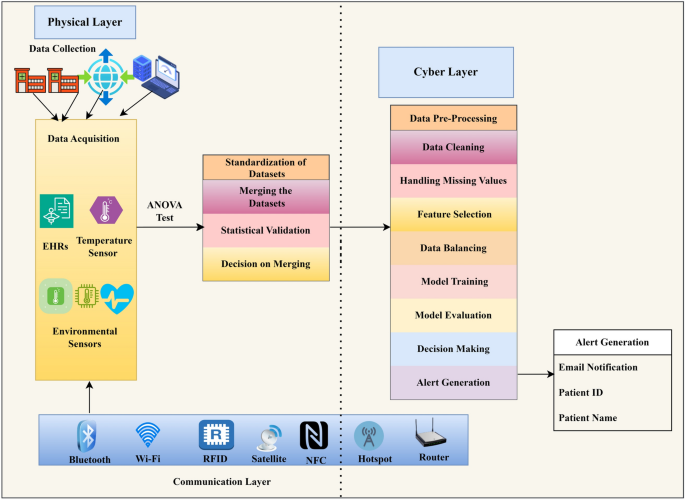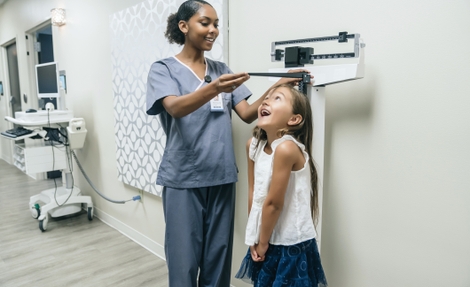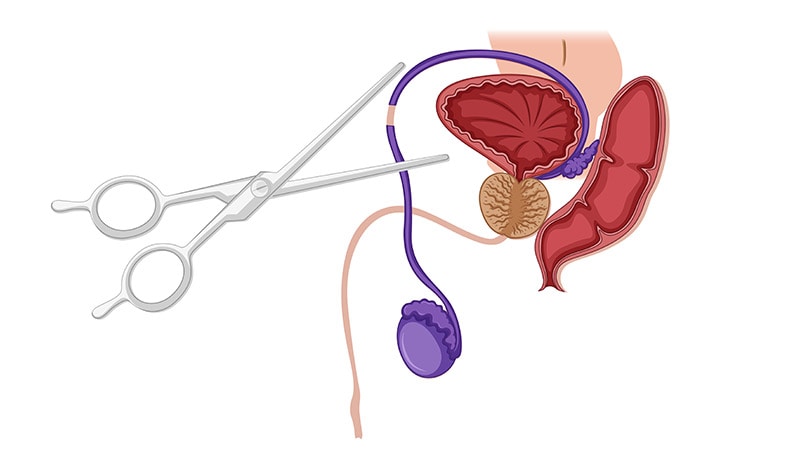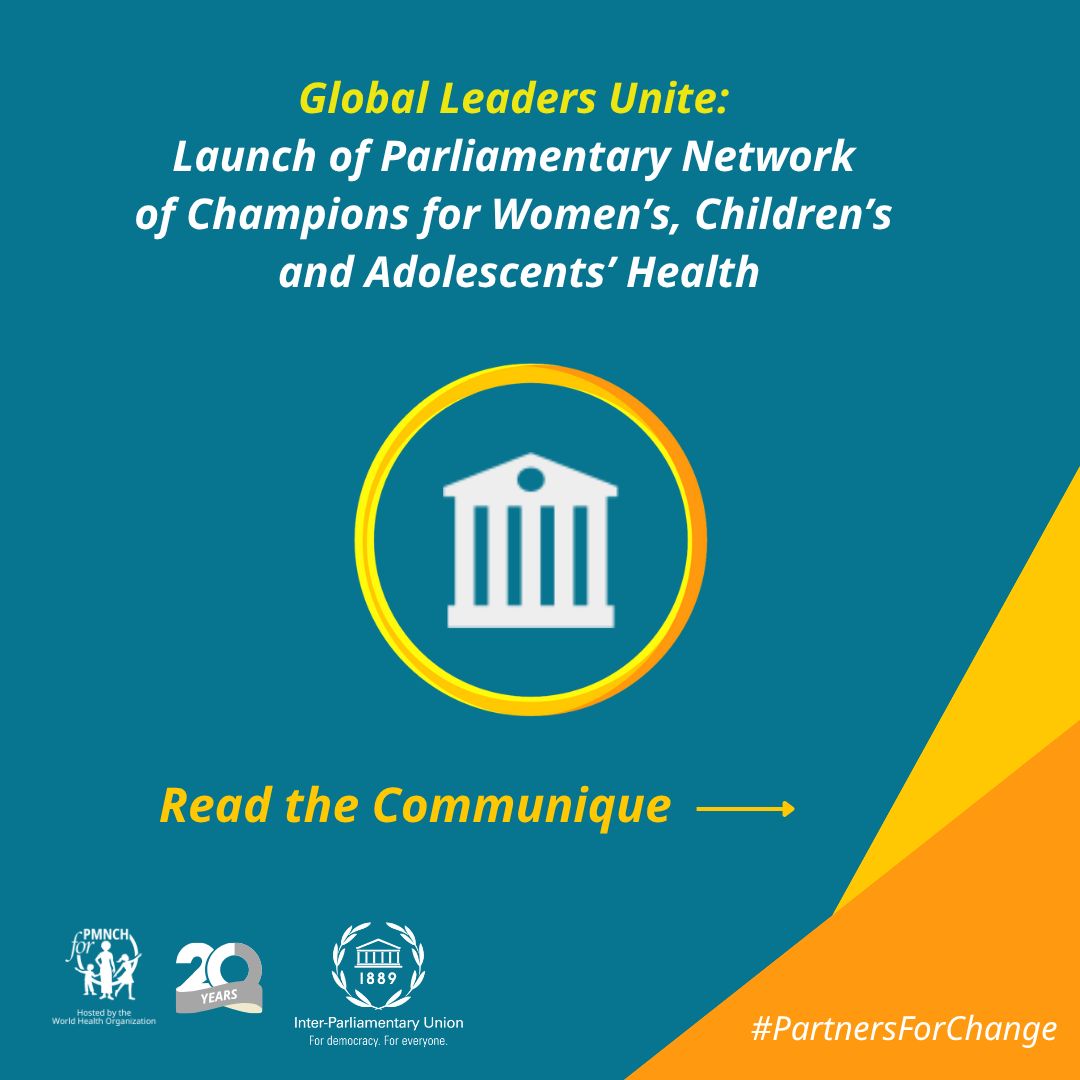Executive Summary: A Framework for COPD Management in Alignment with Sustainable Development Goals
Chronic Obstructive Pulmonary Disease (COPD) exacerbations present a significant global health challenge, undermining progress towards Sustainable Development Goal 3 (SDG 3): Good Health and Well-being. Current predictive models often lack the real-time, multi-source data integration necessary for effective, proactive care. This report details a Cyber-Physical System (CPS) enabled framework that directly addresses this gap by integrating clinical and online data to predict COPD exacerbations. By leveraging advanced machine learning, this framework supports SDG 3, Target 3.4, which aims to reduce premature mortality from non-communicable diseases. The system’s innovative use of technology contributes to SDG 9: Industry, Innovation, and Infrastructure by building a resilient and intelligent healthcare infrastructure. Experimental results, validated through statistical analysis, confirm the framework’s high accuracy and potential to deliver timely alerts, improve patient outcomes, and reduce healthcare costs, thereby promoting a more sustainable and equitable healthcare ecosystem.
1.0 Introduction: Aligning Healthcare Innovation with Sustainable Development Goals
Chronic Obstructive Pulmonary Disease (COPD) is a major non-communicable disease that poses a substantial barrier to achieving SDG 3: Good Health and Well-being. The management of COPD is often reactive, leading to preventable hospitalizations and increased mortality, which conflicts with the ambitions of SDG Target 3.4. The absence of real-time monitoring tools limits the capacity of healthcare systems to provide timely and preventive care, a cornerstone of universal health coverage as outlined in SDG Target 3.8.
This research introduces a novel framework based on Cyber-Physical Systems (CPS) as a technological innovation to address these challenges, directly contributing to SDG 9: Industry, Innovation, and Infrastructure. By integrating real-time data from diverse sources and applying machine learning models, the framework facilitates a paradigm shift from reactive treatment to proactive, preventive healthcare management. This approach not only improves individual patient outcomes but also enhances the efficiency and sustainability of healthcare systems.
1.1 Framework Architecture for Sustainable Health
The proposed framework is structured to create a resilient and intelligent health monitoring system:
- Physical Layer: Gathers continuous patient health data from medical sensors and authenticated online sources, forming the foundation for a responsive healthcare infrastructure.
- Cyber Layer: Processes and analyzes the collected data using advanced statistical and machine learning techniques to generate predictive insights and early warnings for COPD exacerbations.
This real-time, adaptive system enhances clinical decision-making and supports the development of smart, sustainable healthcare solutions, crucial for managing chronic diseases on a global scale.
2.0 Problem Statement: Addressing Gaps in Chronic Disease Management for SDG 3
The central problem is the effective integration of disparate data sources within a Cyber-Physical System to enhance COPD management, a critical step toward achieving SDG 3. The challenge lies in merging primary clinical data with secondary online data to create a statistically valid and unified dataset for robust machine learning applications. This process is fundamental to building the innovative infrastructure required by SDG 9 to support global health objectives.
2.1 Technical Objectives for a Unified Data Framework
The successful implementation of this framework requires the completion of several technical tasks:
- Data Standardization: Normalize features across all datasets to ensure comparability and prevent model bias.
- Data Merging: Combine standardized datasets into a single, comprehensive repository for analysis.
- Statistical Validation: Employ Analysis of Variance (ANOVA) to confirm the statistical compatibility of the merged data, ensuring that the foundational data for the predictive models is robust and reliable.
- Decision and Application: Utilize the validated, merged dataset within the CPS framework to train machine learning models capable of delivering actionable insights for proactive COPD management.
3.0 Literature Review: Technological Advancements in Support of Global Health Goals
Recent research in Cyber-Physical Systems and Machine Learning has demonstrated significant potential for advancing healthcare, aligning with the targets of SDG 3 and SDG 9. Previous studies have explored CPS resilience, energy-efficient health monitoring, and predictive modeling using electronic medical records. However, a gap remains in the real-time integration of multi-source data for chronic disease management.
3.1 Comparison with the Proposed Approach
This framework distinguishes itself by making unique contributions to sustainable healthcare:
- It is the first to systematically combine validated hospital and authenticated online health data for COPD prediction.
- It employs a dual machine-learning approach (Random Forest and ANN) to ensure both feature robustness and the capture of complex, non-linear patient data relationships.
- It delivers a real-time, explainable solution that balances clinical relevance with computational efficiency, making it a practical tool for achieving the goals of SDG 3.
4.0 Proposed Framework: A CPS for Sustainable Health Management
The proposed framework provides an end-to-end solution for real-time COPD exacerbation prediction by integrating physical data acquisition with cyber-analytic capabilities. This architecture is designed to support the proactive healthcare models needed to meet the challenges of SDG 3.
4.1 Physical Layer: Building Resilient Health Infrastructure
The Physical Layer is the foundation of the system, contributing to the resilient infrastructure goals of SDG 9.
- Sensors and Data Acquisition: Real-time health data is collected via wearable monitors, smart inhalers, and environmental sensors.
- Communication Technologies: Wireless technologies like Wi-Fi and Bluetooth ensure seamless data transmission from the patient to the processing unit.
4.2 Cyber Layer: Transforming Data into Actionable Health Insights
The Cyber Layer processes the collected data to generate predictive intelligence, enabling timely interventions that reduce mortality (SDG 3.4) and optimize resource use.
- Data Pre-processing and Merging: Data from primary (hospital) and secondary (online) sources are cleaned, normalized, and merged.
- Statistical Validation via ANOVA: An ANOVA test is applied to the merged dataset to ensure statistical coherence and validity, confirming that the data is reliable for developing predictive algorithms.
- Feature Selection and Scaling: Statistically significant features are selected and scaled to prevent model bias and improve computational efficiency.
- Model Training and Evaluation: Machine learning models, including Random Forest and Artificial Neural Networks, are trained on the validated dataset to predict COPD exacerbations.
- Alert Generation: The system generates timely alerts for healthcare providers when the prediction algorithm identifies a high risk of exacerbation, facilitating proactive patient care.
5.0 Results and Analysis: Demonstrating Efficacy in Achieving Health and Innovation Goals
The integrated CPS framework demonstrated high efficacy in predicting COPD exacerbations, showcasing its potential to significantly contribute to SDG 3 by enabling early and proactive interventions. The Random Forest Classifier and the Artificial Neural Network both achieved a superior accuracy of 97.5%, confirming their ability to handle complex, non-linear relationships in patient data. This high level of accuracy is critical for reliably identifying at-risk patients, reducing hospitalizations, and improving quality of life, thereby supporting the goal of reducing premature mortality from non-communicable diseases (SDG 3.4).
5.1 Key Performance Metrics and Model Comparisons
The performance of the proposed models was benchmarked against other standard classifiers to validate their effectiveness.
- Random Forest (RF): Achieved 97.5% accuracy, with high precision, recall, and an AUC of 0.99, indicating excellent diagnostic ability.
- Artificial Neural Network (ANN): Matched the RF with 97.5% accuracy and an AUC of 0.98, proving its capability in modeling complex health data.
- Baseline Models (SVM, LR, KNN): Showed lower performance, highlighting the superiority of the selected ensemble and neural network models for this specific healthcare application.
Statistical significance testing confirmed that the Random Forest model’s performance was significantly better than the baseline models, reinforcing its suitability for deployment in a real-world clinical setting to advance the objectives of SDG 3 and SDG 9.
6.0 Future Directions: Scaling Impact for Global Sustainable Development
The successful implementation of this framework opens several avenues for future research and development aimed at scaling its impact on global health and sustainability.
6.1 Enhancing Predictive Capabilities and System Integration
- Advanced AI Integration: Future work will explore deep learning and reinforcement learning to further enhance prediction accuracy and personalize patient interventions, directly contributing to better health outcomes under SDG 3.
- Real-Time Decision Support: The framework can be integrated into clinical decision support systems, empowering healthcare providers with real-time, data-driven insights to prevent acute health events.
6.2 Ensuring Security and Scalability for Universal Application
- Data Security and Privacy: Implementing advanced security protocols, such as blockchain or federated learning, will be crucial for protecting sensitive patient data and building trust for large-scale adoption.
- Global Scalability: Scaling the system through cloud infrastructure can extend its benefits to diverse healthcare settings, supporting the goal of universal health coverage (SDG 3.8) and contributing to the development of smart, sustainable communities (SDG 11).
7.0 Conclusion: A Contribution to Sustainable Healthcare through Technological Innovation
This research has successfully developed and validated a real-time COPD prediction framework that leverages a Cyber-Physical System to advance the goals of sustainable healthcare. By integrating multi-source data and applying advanced machine learning models, the framework provides a robust tool for proactive medical decision-making. This work represents a tangible contribution to SDG 3 (Good Health and Well-being) by offering a solution to reduce mortality from chronic diseases and to SDG 9 (Industry, Innovation, and Infrastructure) by demonstrating an innovative and resilient technological application for healthcare.
The framework’s ability to deliver early warnings for COPD exacerbations can significantly reduce hospitalization rates, lower healthcare costs, and improve patient quality of life. As such, it serves as a model for how technology can be harnessed to create more efficient, equitable, and sustainable healthcare systems for the future.
1. Which SDGs are addressed or connected to the issues highlighted in the article?
SDG 3: Good Health and Well-being
The article is fundamentally centered on improving health outcomes for individuals with Chronic Obstructive Pulmonary Disease (COPD), a non-communicable disease. The proposed Cyber-Physical System (CPS) framework aims to “improve patient outcomes and reducing healthcare costs” by enabling early prediction and proactive management of the disease. This directly aligns with SDG 3’s mission to ensure healthy lives and promote well-being for all at all ages, particularly by addressing chronic diseases.
SDG 9: Industry, Innovation, and Infrastructure
The research contributes to SDG 9 by developing and promoting an innovative technological solution for a major healthcare challenge. The article describes a “Cyber-Physical System-enabled framework that integrates both primary (clinical) and secondary (online) data sources” and employs “advanced machine learning techniques.” This focus on leveraging advanced technology to create more efficient and effective systems is a core component of fostering innovation. Furthermore, the article notes the framework’s potential applications in “smart hospital infrastructures,” which relates to upgrading infrastructure for greater efficiency and resilience.
2. What specific targets under those SDGs can be identified based on the article’s content?
SDG 3: Good Health and Well-being
-
Target 3.4: By 2030, reduce by one third premature mortality from non-communicable diseases through prevention and treatment and promote mental health and well-being.
The article directly addresses this target by focusing on COPD, a major non-communicable disease that leads to “increased mortality.” The proposed framework’s goal is to shift from “reactive treatment to proactive management” through early prediction of exacerbations. This proactive approach is a form of prevention and timely treatment designed to reduce the severe impacts of the disease, thereby contributing to the reduction of premature mortality.
-
Target 3.d: Strengthen the capacity of all countries, in particular developing countries, for early warning, risk reduction and management of national and global health risks.
The core function of the proposed system is to serve as an early warning tool. The framework is designed to “predict COPD exacerbations in real-time,” “provide early warnings,” and “generate alerts if abnormal conditions are detected.” This directly enhances the capacity for early warning and risk reduction in the management of a significant health risk like COPD.
SDG 9: Industry, Innovation, and Infrastructure
-
Target 9.4: By 2030, upgrade infrastructure and retrofit industries to make them sustainable, with increased resource-use efficiency and greater adoption of clean and environmentally sound technologies and industrial processes.
The article discusses improving the efficiency of healthcare systems, stating that early prediction can lead to “resource optimization” and “enhanced resource utilization.” The proposed CPS framework is a technological upgrade for healthcare infrastructure, making it “smarter” and more efficient. By reducing “hospital admissions” and “emergency room visits,” the system promotes a more sustainable and resource-efficient healthcare model.
-
Target 9.5: Enhance scientific research, upgrade the technological capabilities of industrial sectors in all countries, in particular developing countries, encouraging innovation and substantially increasing the number of research and development workers and public and private research and development spending.
This research is a direct example of enhancing scientific research and upgrading technological capabilities in the healthcare sector. The development of a “novel framework for COPD management in cyber-physical systems using machine learning” is an innovative application of technology (AI, CPS) to solve a real-world health problem. The entire article represents a contribution to scientific and technological advancement in healthcare.
3. Are there any indicators mentioned or implied in the article that can be used to measure progress towards the identified targets?
SDG 3: Good Health and Well-being
- Reduction in hospitalization rates: The article implies this as a key outcome, stating that a proactive approach “helps in reducing hospitalizations and thus has better management of COPD.” This can be a measurable indicator for Target 3.4.
- Improved patient outcomes: Mentioned in the abstract and conclusion, this is a direct measure of the effectiveness of treatment and prevention strategies under Target 3.4. It could be quantified through metrics like reduced exacerbation frequency or improved quality of life scores.
- Prediction model performance metrics: The article explicitly mentions “accuracy, precision, recall, F1-score, and AUC” as key metrics to evaluate the framework’s effectiveness. These metrics directly measure the capability of the “early warning” system, which is central to Target 3.d.
SDG 9: Industry, Innovation, and Infrastructure
- Reduction in healthcare costs: This is repeatedly mentioned as a primary benefit of the system (“ultimately improving patient outcomes and reducing healthcare costs”). This serves as a direct indicator of increased resource-use efficiency as per Target 9.4.
- Enhanced resource utilization: The article states that the system leads to “enhanced resource utilization such that the system is fast and effective for large healthcare systems.” This is a qualitative indicator of progress toward Target 9.4.
- Development and deployment of innovative technological frameworks: The creation and successful implementation of the proposed CPS framework itself is an indicator of progress in enhancing scientific research and technological capabilities, as called for in Target 9.5.
4. Create a table with three columns titled ‘SDGs, Targets and Indicators” to present the findings from analyzing the article.
| SDGs | Targets | Indicators |
|---|---|---|
| SDG 3: Good Health and Well-being | Target 3.4: Reduce premature mortality from non-communicable diseases through prevention and treatment. |
|
| SDG 3: Good Health and Well-being | Target 3.d: Strengthen capacity for early warning, risk reduction, and management of health risks. |
|
| SDG 9: Industry, Innovation, and Infrastructure | Target 9.4: Upgrade infrastructure to increase resource-use efficiency. |
|
| SDG 9: Industry, Innovation, and Infrastructure | Target 9.5: Enhance scientific research and upgrade technological capabilities. |
|
Source: nature.com







